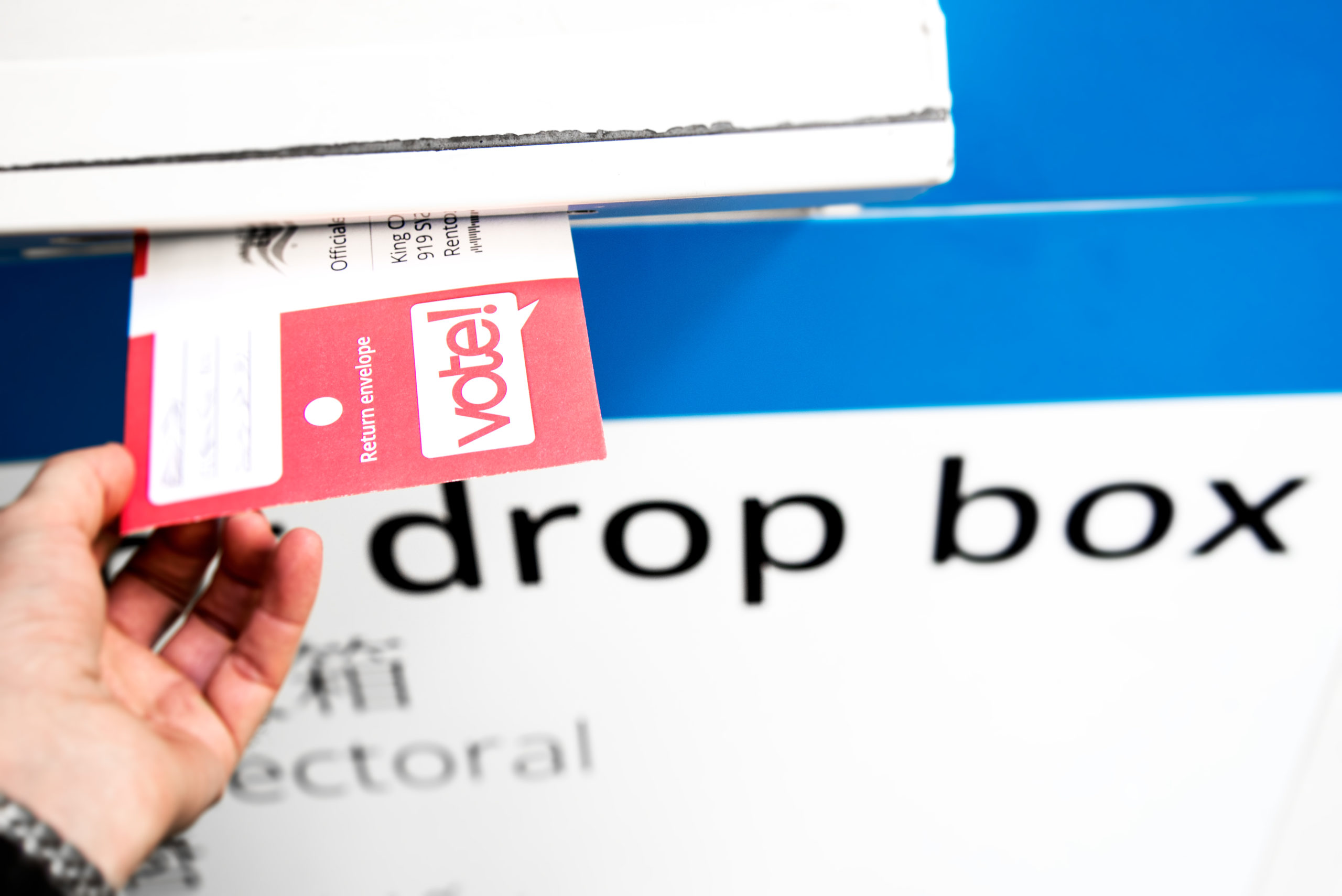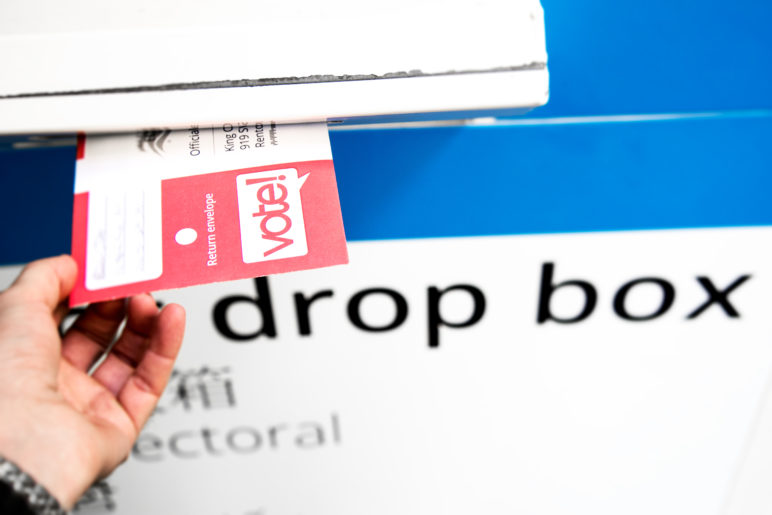In North Carolina, Democrats have returned more than three times as many ballots through mail-in voting as Republicans, as of October 12. Even a modest rate of rejection among North Carolina’s absentee ballots could prove not only devastating for voter disenfranchisement, it could determine who wins North Carolina’s 15 electoral votes, which could decide the election.
As of October 12, 494,881 absentee votes have been cast in North Carolina and 2.7 percent of them—13,406 ballots—have been rejected. More than three times as many Democratic voters’ ballots have been rejected as have Republican: 7,757 ballots from
Even a modest rate of rejection among North Carolina’s absentee ballots could prove not only devastating for voter disenfranchisement, it could determine who wins North Carolina’s 15 electoral votes, which could decide the election.

Democrats have been rejected compared to just 2,304 ballots rejected from Republicans. If this rejection rate keeps up for all of the 1.3 million voters who have requested absentee ballots, more than 35,000 absentee ballots could be rejected. And if the proportion of Democrats and Republicans remains consistent, about 20,000 of those would be from Democratic voters and about 6,000 from Republicans.
In a battleground state that is the seventh most likely state to determine the Electoral College outcome, a partisan difference of 14,000 more Democratic votes being rejected could be the deciding factor. This is not hyperbole: in 2016, North Carolina Governor Roy Cooper won by just 10,277 votes.
The reasons for the partisan difference are twofold: first, more Democrats are voting absentee. Second, absentee ballots from Black voters are rejected at higher rates than whites, and Black voters tend to be Democrats.
More Democrats than Republicans are choosing to vote by mail. Democrats constitute 51 percent of absentee voters while Republicans constitute only 18 percent of North Carolina’s absentee voters. For every Republican that has voted absentee, three Democrats have voted absentee. Even if partisan rejection rates were identical, Democrats would face a structural disadvantage due to more Democrats choosing to vote by mail.
Racial disparities in ballot rejection rates are having a deleterious impact on Democratic vote totals. In North Carolina, 86 percent of Black absentee voters are Democrats while just 1 percent of Black absentee voters are Republican. Twenty-seven percent of North Carolina Democrats identify as Black while only 1 percent of North Carolina Republicans identify as Black. Because ballots from Black voters are nearly three times more likely to be rejected than ballots from white voters, ballots voted by Democrats are slightly more likely to be rejected as ballots voted by Republicans.
| Rejected ballots | Cured or in Cure Process | Projected rejections | Projected cured ballots | Projected rejections if all cured | |
|---|---|---|---|---|---|
| All Voters | 13406 | 7933 | 35241 | 20854 | 14387 |
| Democrats | 7757 | 4872 | 20391 | 12807 | 7584 |
| Republicans | 2304 | 1381 | 6057 | 3630 | 2426 |
This partisan margin could be mitigated through North Carolina’s newly implemented absentee cure process, which provides voters a chance to fix issues with their ballot, including witness and signature issues. Sixty percent of voters whose ballots were rejected are taking advantage of the cure process. Curing ballots is a bipartisan affair: 63 percent of Democrats and 60 percent of Republicans whose ballots were rejected are curing or have cured their ballots.
In a battleground state that is the seventh most likely state to determine the Electoral College outcome, a partisan difference of 14,000 more Democratic votes being rejected could be the deciding factor.

If rates of rejection and cure-seeking continue, and all the voters who are seeking to cure their ballots are successful, the total number of rejected ballots could drop from more than 35,000 to under 15,000. The partisan gap would decline from more than 14,000 to around 5,000. Democrats would still face a disadvantage since absentee votes are more likely to be rejected than in-person votes, but the cure process in place would significantly mitigate this effect.
Unfortunately, a lawsuit brought by the Trump administration is seeking to stop North Carolina’s absentee cure process, potentially leaving thousands of voters helpless when their legitimate ballots are simply tossed in the trash.
In good times and bad, every vote should count, whether cast in a polling booth or through the mail. This is no more true when margins are narrow and stakes are high. If the election does rest on a razor’s edge in the state, North Carolina’s absentee cure process could help ensure winners and losers are decided by voters’ choices, not by systems which determine whose votes get counted.
Sightline Institute is a 501(c)3 non-profit organization and does not support, endorse, or oppose any candidate or political party.
Zane Gustafson, research contributor, holds a master of public affairs degree, with a focus in climate policy, from the Evans School of Public Policy and Governance at the University of Washington. He also studies foreign affairs, political rhetoric, and American history.
Hayat Norimine, research contributor, is a freelance writer who grew up in Washington on the border of Idaho. She previously covered city halls and politics for The Dallas Morning News, Seattle Met magazine, and The Daily News in Longview, Washington. She has an MA in journalism from the Medill School of Journalism and a BA in English from the University of Washington. For Sightline, she researches and writes about democracy reform and elections issues and reports on fossil fuel proposals along the Thin Green Line.
For press inquiries and interview requests, please contact Anna Fahey.












Penny Faro
There should be no law suit considered at this late date!! These law suits are being filed out of desperation and not common sense and fairness. Trying to stop the Curing process only serves Trump campaign in suppressing the voters will, Not about fairness.
Jean
How can you find out if your mail in ballots were rejected?